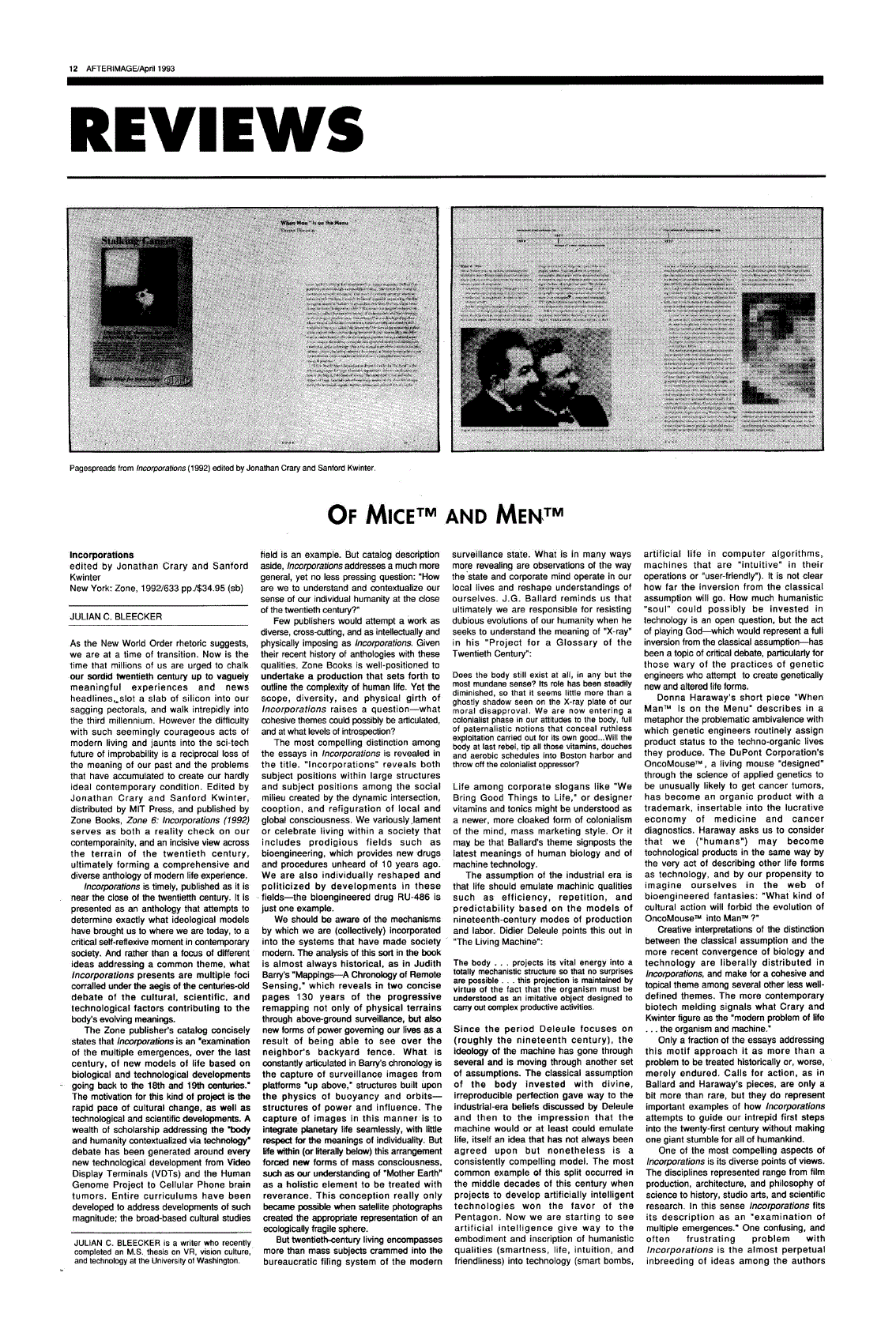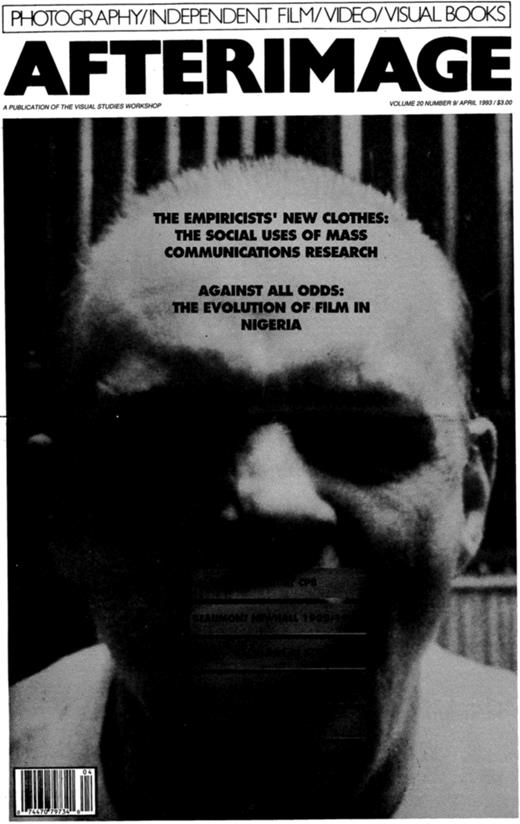
Contributed By: Julian Bleecker
Published On: Apr 14, 1993, 12:46:05 PDT
Afterimage – April 1993
REVIEWS
Incorporations
Edited by Jonathan Crary and Sanford Kwinter
New York: Zone Books, 1992
633 pages / $34.95 (paperback)
Reviewed by Julian C. Bleecker
As the rhetoric of the New World Order suggests, we are in a period of profound transition. Millions are encouraged to attribute the sordid twentieth century to vaguely meaningful experiences and headlines, slot a slab of silicon into their lives, and step boldly into the third millennium. However, such seemingly courageous acts of modernity often come at the cost of losing touch with the meaning of our past and the challenges that have shaped our present.
Edited by Jonathan Crary and Sanford Kwinter, Incorporations (published by Zone Books and distributed by MIT Press) serves as both a reality check on contemporary life and an incisive survey of the twentieth century. It forms a comprehensive anthology of modern experiences, examining the ideological models that have led us to this critical moment in society. Rather than addressing a singular theme, the collection presents multiple focal points united by the interplay of cultural, scientific, and technological forces that have reshaped the body’s meanings over the past century.
The publisher describes Incorporations as an “examination of the multiple emergences, over the last century, of new models of life based on biological and technological developments, tracing roots back to the 18th and 19th centuries.” The rapid pace of cultural, technological, and scientific change has inspired a wealth of scholarship on the intersections of humanity and technology, addressing topics as varied as Video Display Terminals (VDTs), the Human Genome Project, and cellular phone radiation.
At its core, Incorporations seeks to answer a pressing question: “How are we to understand and contextualize our humanity at the close of the twentieth century?” The essays explore how cultural and technological systems have integrated individuals into modern society, with historical analysis providing the foundation for understanding this incorporation.
Thematic Exploration
One of the book’s compelling themes is how the body and humanity have been recontextualized through technology. Judith Barry’s essay, “Mappings—A Chronology of Remote Sensing,” highlights the historical progression of surveillance technologies and their impact on power dynamics and individual autonomy. Barry traces 130 years of surveillance development, illustrating how these technologies have reshaped societal consciousness—from satellite imagery that inspires ecological awareness to the rise of surveillance states.
J.G. Ballard’s contribution, “Project for a Glossary of the Twentieth Century,” offers a more personal critique. He questions whether the body still exists beyond its commodified, utilitarian role, calling attention to the colonialist attitudes that exploit and reshape humanity under the guise of progress. He provocatively asks whether humanity will rebel against the systems that define and constrain it.
Donna Haraway’s essay, “When Man™ Is on the Menu,” addresses the troubling commodification of life forms through genetic engineering. She uses the example of DuPont’s OncoMouse™, a genetically engineered mouse designed for cancer research, to illustrate how life itself is being redefined as a technological product. Haraway warns that such perspectives risk reducing humanity to similar technological constructs, prompting questions about the ethical boundaries of biotechnology.
A Cross-Disciplinary Anthology
The strength of Incorporations lies in its diversity of perspectives, drawing from disciplines such as philosophy, film, architecture, and science. This breadth reflects its description as an “examination of multiple emergences.” Yet, this diversity is also its weakness: the interweaving of ideas among contributors can sometimes feel insular and repetitive, making the text challenging to navigate.
Didier Deleule’s essay, “The Living Machine,” explores the ideological evolution of the body from divine perfection to mechanistic efficiency, shaped by industrial-era assumptions. He traces how the modern view of the body as a machine has given way to attempts at emulating life through artificial intelligence and biotechnology. These evolving paradigms raise questions about the extent to which humanistic qualities can be imbued in technology.
Conclusion
Incorporations challenges readers to confront the complex interplay between humanity, technology, and culture. While not every essay offers a clear call to action, the anthology provides a valuable framework for navigating the uncertainties of the twenty-first century. Its multidisciplinary approach ensures a broad exploration of the modern condition, even as it demands patience and intellectual commitment from its readers.
Julian C. Bleecker, the reviewer, recently completed an M.S. thesis on virtual reality, vision culture, and technology at the University of Washington.
